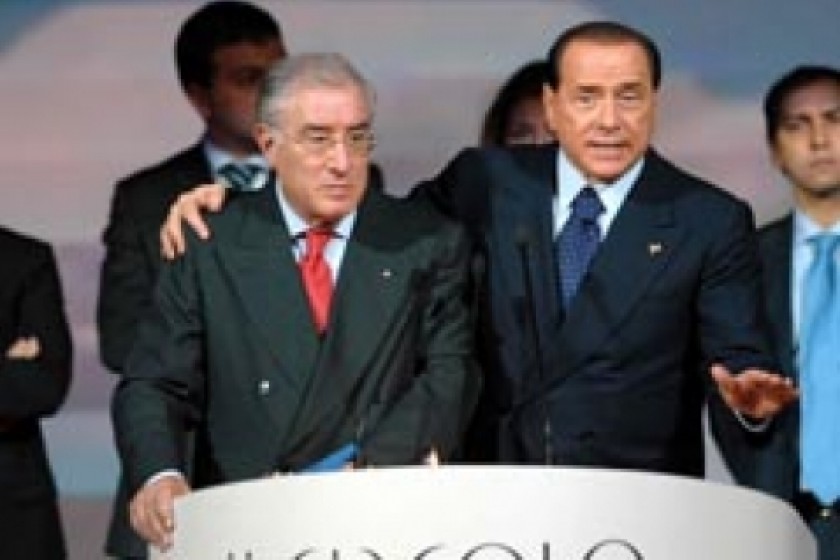
Italian Trial Looks At Mafia-State Pact
by Lorenzo Bodrero
A much anticipated trial in Italy is set to begin in Palermo on May 27 where prosecutors will charge that high level Italian government officials made a pact with Sicilian Mafia bosses. They allege politicians agreed to roll back laws targeting the Mafia in exchange for a cooling of violence. The potential outcomes of this trial, nicknamed “La Trattativa” (or the “State-Mafia pact”) by the press, could be devastating to officials and local Mafia, and maybe second only to the Palermo “maxi-trial” of the 1980s, when 475 Mafiosi were indicted and most were convicted.
As part of the indictment, an extensive investigative report by the Public Prosecutor’s Office at the Court of Palermo reveals new details of an alleged web of relationships and deals between criminals and state officials. On March 6 2013, a judge in Palermo found there was sufficient evidence in the report for the trial to proceed. If the prosecution’s allegations are proven, then 25 years of Italy's political history will be rewritten, with potentially enormous repercussions.
According to the prosecution, representatives of the Italian government and the Sicily-based La Cosa Nostra held a series of negotiations in 1992 and 1993, reaching a final agreement in 1994. Prosecutors allege the government consented to repeal certain anti-Mafia laws and ease prison regulations against Mafia inmates in exchange for a halt to the killings and bombings that roiled Italy between the end of the 1980s and the beginning of the 1990s.
Unlike similar reports in other countries, which are generally limited to the crimes under consideration, the Palermo prosecutors’ report is wide-ranging, addressing not only the crimes to be tried but the historical context and even the cultural influences involved.
The road to ‘repentance’
The prosecutors’ report alleges that the roots of the “State-Mafia pact” lie in a complex web of relationships between Mafiosi and officials dating back more than two decades. According to the report, drastic regional political changes in the 1980s, including the collapse of Communism, led to radical social, financial and political changes in Italy. One such change involved La Cosa Nostra. Whereas the state had tended to tolerate and, in some cases, legitimize the presence and power of the criminal organization, officials believed it was time to cut the ties and show the public they were committed to moving against the Mafia.
At the time, La Cosa Nostra was not only a criminal organization but an entire criminal system, relying on its solid connections with Italian political and financial elites.
Efforts like the Palermo “maxi-trial”, 1986-87, held in a purpose-built bunker, dealt a devasting blow to the Sicilian crime syndicate by imprisoning numerous affiliates along with several top figures, demonstrating publicly that impunity, once virtually guaranteed for Mafia members, was over. In Italy, the maxi-trial is widely considered the first important strike by the state against the Mafia. The sentence read on Dec. 16th 1987 involved 475 defendants, of whom 360 were found guilty of 120 crimes, totalling 2,665 years of prison. The crimes included Mafia affiliation as well as murder, drug trafficking and extortion.
The maxi-trial would have not been possible without the cooperation of former Mafia boss Tommaso Buscetta, the first major “pentito” in Italian Mafia history. The term (literally “repentant”) describes a Mafioso who collaborates with authorities’ investigations. Becoming a “pentito” is among the most disgraceful things that a Mafia member can possibly do; their ‘honor’ code forbids collaboration with authorities under any circumstances. The punishment for such betrayal is death: not just for the “pentito”, but for his relatives and friends.
Buscetta's decision to cooperate cracked another solid wall traditionally seen as an impenetrable defense against authorities' attacks: the “omertà” (code of silence). While Buscetta may have been Italy’s very first Mafia informant, he was followed by numerous others. The resulting damage to La Cosa Nostra and other criminal syndicates has had serious repercussions for the Mafia even today.
Buscetta revealed crucial information to the prosecutors, not only for the maxi-trial itself but also for understanding the complex system of La Cosa Nostra, its modus operandi, structure and chain of command in Italy and the United States. His revelations would later form the basis of the work by Prosecuting Magistrates Giovanni Falcone and Paolo Borsellino in the fight against the Sicilian Mafia.
The trial brought the La Cosa Nostra to its knees. But it could still fight back.
“We must declare war on the State so as to make peace afterwards,” said Toto Riina, the Sicilian Mafia’s boss of bosses, in 1992 according to the prosecutor’s report. “In the future we cannot allow politicians to turn their back on us again,” stated boss Leoluca Bagarella in a wiretap. The strategy of La Cosa Nostra was to confront the Italian state with an unprecedented wave of violence and threats. On their black list were politicians and public officials: if the State did not grant La Cosa Nostra a number of requests, blood would flow.
And it did.
 Videos
Videos Photos
Photos




Write a comment